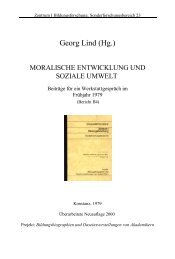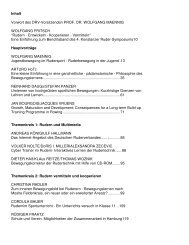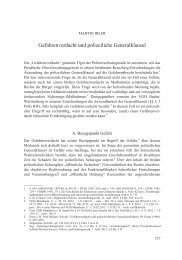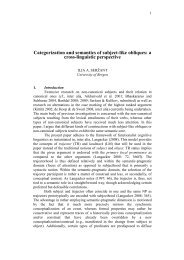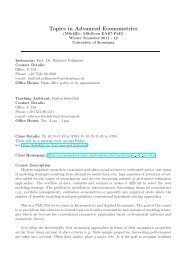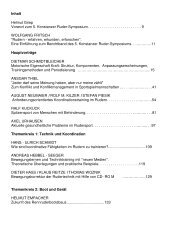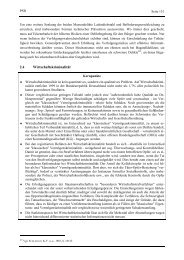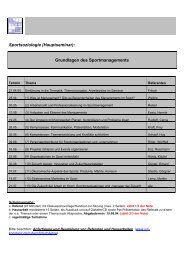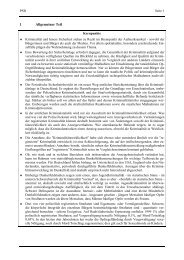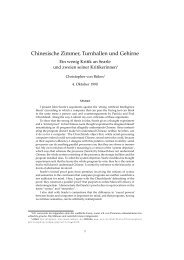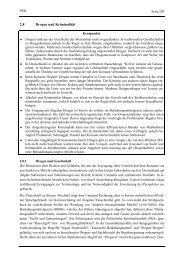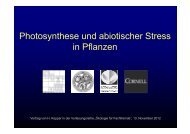Book of Abstracts Book of Abstracts - Universität Konstanz
Book of Abstracts Book of Abstracts - Universität Konstanz
Book of Abstracts Book of Abstracts - Universität Konstanz
You also want an ePaper? Increase the reach of your titles
YUMPU automatically turns print PDFs into web optimized ePapers that Google loves.
Fast Electronic Relaxation in Metal Clusters via Excitation <strong>of</strong><br />
Coherent Shape Deformations: Slipping Through a Bottleneck<br />
V. V. Kresin 1 , Yu. N. Ovchinnikov 2 , V. Z. Kresin 3<br />
1 Dept. <strong>of</strong> Physics, University <strong>of</strong> Southern California, Los Angeles, California 90089-0484, USA<br />
2 Landau Institute for Theoretical Physics, Russian Academy <strong>of</strong> Sciences, Moscow 117332, Russia<br />
3 Lawrence Berkeley Laboratory, University <strong>of</strong> California, Berkeley, California 94720, USA<br />
B - 27<br />
We introduce and analyze a channel <strong>of</strong> electronic relaxation in metallic clusters which<br />
enables large energy transfer to the ionic subsystem and, correspondingly, fast electron<br />
relaxation dynamics. The discreteness <strong>of</strong> electronic levels in finite size-quantized systems such<br />
as metal nanoparticles, quantum dots, etc., represents a challenge for understanding the<br />
relaxation behavior <strong>of</strong> excited electrons. As is known, cases when the spacing between<br />
electronic energy levels exceeds the vibrational frequencies raise the prospect <strong>of</strong> so-called<br />
relaxation bottleneck phenomena. That is to say, if in order to drop to a lower-lying level an<br />
excited electron needs to emit multiple simultaneous vibrational quanta, the probability <strong>of</strong> such<br />
a transition should be strongly suppressed: multiphonon processes normally occur only as high<br />
order interaction corrections.<br />
The proposed relaxation mechanism which overcomes the bottleneck involves the special ability<br />
<strong>of</strong> free clusters to deform. A cluster with an electron in a previously unoccupied orbital (e.g.,<br />
excited by light or externally injected) will proceed to deform from its original shape.<br />
Microscopically, this deformation invalidates the selection rule which in the lowest order allows<br />
only single-phonon processes: whereas the rule assumes that the ionic equilibrium position is<br />
fixed during the electronic transition, a shift in the cluster’s ionic framework can produce a<br />
coherent multiphonon transition without any additional smallness. We have developed a method<br />
which allows us to describe the evolution <strong>of</strong> the deformation parameter up to the level crossing<br />
point, followed by electronic intershell transitions. The process is analogous to internal<br />
conversion in polyatomic molecules, but generally involves more than a single pair <strong>of</strong> electronic<br />
orbitals. It is found that the corresponding relaxation time indeed can be quite short.<br />
As an application, we have performed a model calculation for aluminum clusters. This was<br />
motivated by recent experimental work [1] which used time-resolved two-photon photoemission<br />
<strong>of</strong> Aln¯ (n=6-15) to demonstrate that the intermediate electronic state decays within a few<br />
hundred femtoseconds in all <strong>of</strong> the above cluster sizes, even in the closed-shell Al13¯. Our<br />
results are in agreement with the observed lifetime.<br />
This work was supported by the NSF (V.V.K.), a NATO Collaborative Linkage Grant (V.V.K.<br />
and Yu.N.O.), and DARPA (V.Z.K.).<br />
References<br />
[1] P. Gerhardt, M. Niemietz, Y. D. Kim, G. Ganteför, Chem. Phys. Lett. 382, 454 (2003).<br />
67



